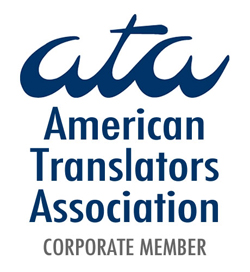
We also accept payments via Paypal
Huri Translations
Tel. +689 89 205 483
info@huri-translations.pf
PO BOX 365 Maharepa
98728 Mo'orea
French Polynesia
N°TAHITI 876649
Subscribe to our newsletter


We asked Polynesian Tufuga Iosua Ioane Fānene whether any parallel could be drawn between the Rongorongo script and other scripts like Sumerian. Fānene does not think so, and explains that hieroglyphs can be used four ways: As a single sound (uniliteral, i.e. /a/), a vowel-consonant pair in either order (biliteral, i.e. /iw/, /wi/), a three-sound combination (triliteral, /hst/, /nwt/, /'ast/, etc.), or determinative (no sound, meaning only). Most examples of Rongorongo script were destroyed and it seems to the self-taught man the script follows a reverse boustrophedon pattern with 120 different glyphs.
Another notable example of boustrophedonic script is the much more recent Avoiuli writing system for the Raga language of Vanua Roaroa, Vanuatu, which was elaborated in the 1990s by Viraleo Boborenvanua. Threading possible paths between Moana languages and Egyptian, Sumerian, Sanskrit or Nahuatl languages through mythology and phonology, Fānene explains there are around 90-160 possible combinations of monosyllabic sounds in most Pacific Islands languages. Since Rongorongo has 120 characters, then it is a median sized set of the maximum size of the “symbolic inventory” needed to represent most Moana dialects. To put this into perspective, there are 400 distinct characters in the Harappan script, which is more than double that of either the Rongorongo or the theoretical Polynesian phonetic complex.
The Rongorongo script could predate known European contact. Supporting evidence comes from genetic analysis of 166 Rapa Nui inhabitants, which uncovered a Native American ancestry component linked to indigenous groups in present-day Colombia around 1200 CE. This correlates with the settlement of remote Oceania and hints at early voyaging contact. Linguistic links between Kūmara (sweet potato), and terms found in Mesoamerica also indicate pre-European interaction. For instance, Moana term Mōlī/Mōrī, which translates into Candlenut oil/grease/fat strongly matches with Nahuatl term Mōlli [ˈmoː.lːi], the Mesoamerican sauce now a staple in Tex-Mex cuisine.
The recent radiocarbon dating has provided insights into the script's origins on Rapa Nui. The discovery of a tablet dating back to 1493-1509 CE challenges assumptions about its pre-European contact existence. Genetic analysis and linguistic links suggest early interactions with Native American populations, reinforcing the possibility of Rongorongo predating known European contact. These findings deepen our understanding of Rapa Nui's cultural and historical complexities, presenting new avenues for exploration of the mysterious script.

Rapa Nui, located 2,000 nautical miles off the Chilean coast, was settled relatively late by Polynesians around 1200 CE. Its indigenous inhabitants developed a unique writing system known as Rongorongo, which survives on just 27 precious wooden tablets. The pictographic glyphs do not resemble other known scripts, but share motifs with ancient rock art on the island. The origins of this undeciphered script remain debated. Was it an independent invention predating known European contact in 1722 CE, or did it arise through external influence after this date?
The Rongorongo script could predate known European contact
A new team publication led by Silvia Ferrara in Scientific Reports provides new evidence by direct radiocarbon dating. Previously, only two Rongorongo tablets housed in Berlin and St. Petersburg had been directly dated, both to the 1800s. Now researchers have dated four previously undated tablets from the Vatican collection in Rome using rigorous pretreatment to extract cellulose. One tablet, crafted from African Podocarpus wood, yielded a date range of 1493-1509 CE, centuries before European arrival. The other three tablets, made from Miro (Polynesian rosewood) and European ash wood, dated between the late 1700s and mid 1800s.
New Radiocarbon Dates Shed Light on the Rongorongo Script of Rapa Nui
